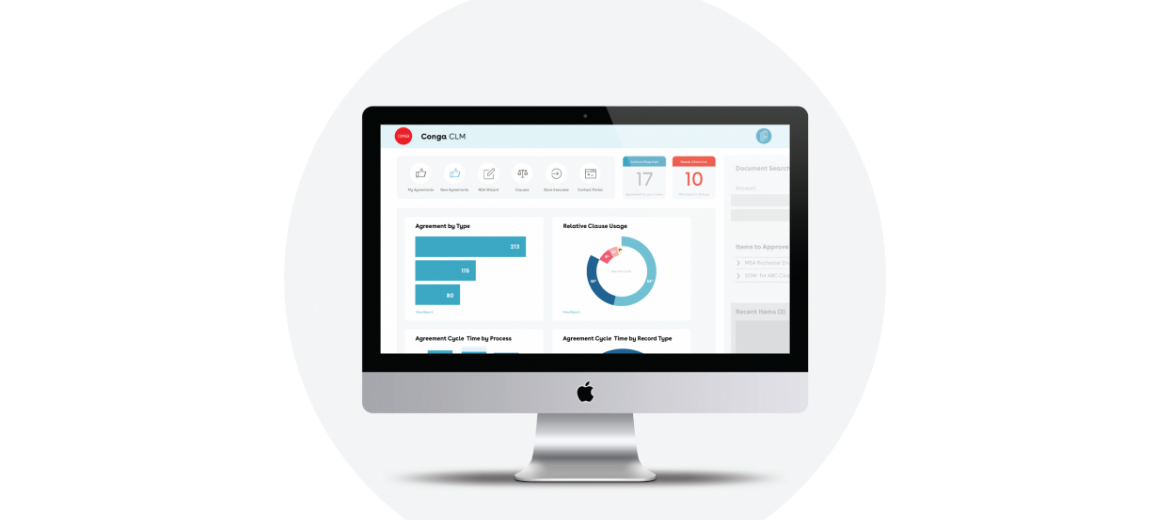How we helped a Fortune 500 healthcare organization implement a new contract lifecycle management (CLM) platform to integrate with SAP, Salesforce, and other applications
At a glance
Our client engaged us to help them transition from a legacy CLM platform to Apttus (now Conga CLM), and to ensure that the new system integrates seamlessly with SAP, Salesforce, and other applications.
Customer challenge
Our client had been using a legacy CLM application that was unable to keep up with the volume and pace of their contracting activities. They managed hundreds of contracts and thousands of amendments valued in hundreds of millions of dollars, plus a continuous flow of internal and external communications. The old system also did not integrate with SAP and lacked the ability to extract product information.
The company’s contracts involve a complex system of benefits and incentives—volume discounts, rebates, etc. With their legacy CLM platform, our client was unable to track this information in detail. Their analytics team lacked the ability to systematically compare contract benefit information with real-time sales and determine which benefits produced the most favorable outcomes.
Approach and solution
Our team completed three workstreams to implement Conga CLM in a way that meets our client’s specific needs:
1. Configure and customize
We configured and customized Conga to support the team’s contract lifecycle management processes, encompassing
• Configuration of the user interface
• Configuration of workflows within the contract approval process
• Creation of contract and notification templates
2. Mitigate historical contracts, amendments, and data
Our team migrated approximately 300 historical contracts and more than 2,000 amendments to the new platform. Because information in the two applications was structured very differently, we created a data mapping document to guide the migration process and built custom fields in Conga as required to support migrated data and defined workflows.
3. Integrate
We integrated Conga with SAP to ensure that a current list of eligible products is available to Salesforce for referencing in contracts. Once the product information is available in Salesforce, contracts can be automatically updated and the most current information is able to flow into all the right places.
Value and benefits: “The Wins”
Our team successfully migrated thousands of files and configured Conga according to our client’s business needs. In addition to being easier to maintain and integrating seamlessly with SAP and Salesforce, the platform is delivering other benefits on several fronts:
Automation
Our client now has automated, flexible workflows for the contract review and approval process. Each time an approval is completed, the system automatically notifies the next reviewer with specific instructions, providing complete visibility into the approval process and the ability to identify and address any blocks as soon as they arise.
Security and reliability
We implemented the necessary security features to ensure that only employees who are authorized to see contracts could access them for viewing, and that only those authorized to make changes had editing privileges. Our team made sure that processes for amending, renewing, and terminating contracts executed in a reliable, predictable way so that our client can continue to fulfill their obligations to their customers.
Contract and document templates
Under the old system, contracts had to be created in Word by hand, a tedious and time-consuming process of inserting information from the application into the contract. Our team equipped our client with a new set of tools for leveraging templates in generating new contracts, streamlining the writing process and ensuring consistency of language.
Analytics
Our client’s analytics team can now produce reports analyzing contract incentives with reference to sales results, helping them ensure that their contracts are structured to drive optimal outcomes.

